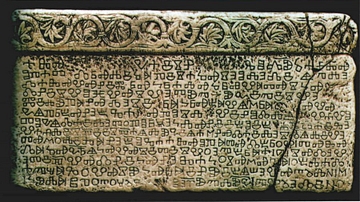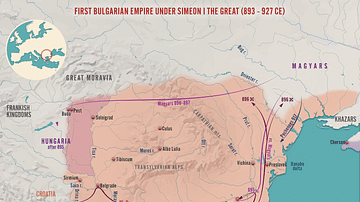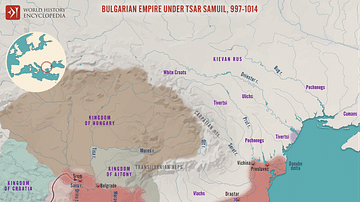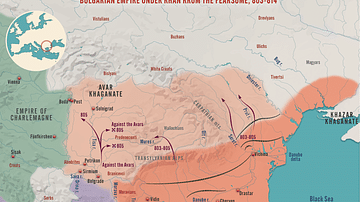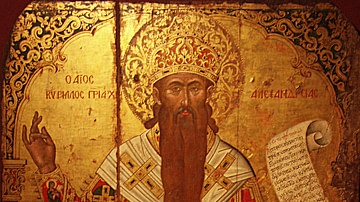Illustration
A map illustrating the journeys of the brothers Cyril and Methodius, two 9th-century Christian missionaries, that shaped the cultural and linguistic landscape of Central and Eastern Europe. Commissioned by the Byzantine Emperor Michael III on a mission to evangelize the Slavic peoples, they recognized the crucial need for a written script to effectively convey Christian doctrines in the Slavonic (Slavic) languages and devised the Glagolitic alphabet (from Old Church Slavonic "glagolitsa" - speech) thus enabling the translation of sacred texts into the vernacular. Later, their disciples refined and adapted the script into what is now known as the Cyrillic alphabet (in honor of Saint Cyril). To this day, it remains the writing system for numerous Slavic and non-Slavic languages.
About the Author
Cite This Work
APA Style
Netchev, S. (2024, January 09). The Creation of the Cyrillic Alphabet, c. 900. World History Encyclopedia. Retrieved from https://www.worldhistory.org/image/18316/the-creation-of-the-cyrillic-alphabet-c-900/
Chicago Style
Netchev, Simeon. "The Creation of the Cyrillic Alphabet, c. 900." World History Encyclopedia. Last modified January 09, 2024. https://www.worldhistory.org/image/18316/the-creation-of-the-cyrillic-alphabet-c-900/.
MLA Style
Netchev, Simeon. "The Creation of the Cyrillic Alphabet, c. 900." World History Encyclopedia. World History Encyclopedia, 09 Jan 2024. Web. 15 Apr 2025.




